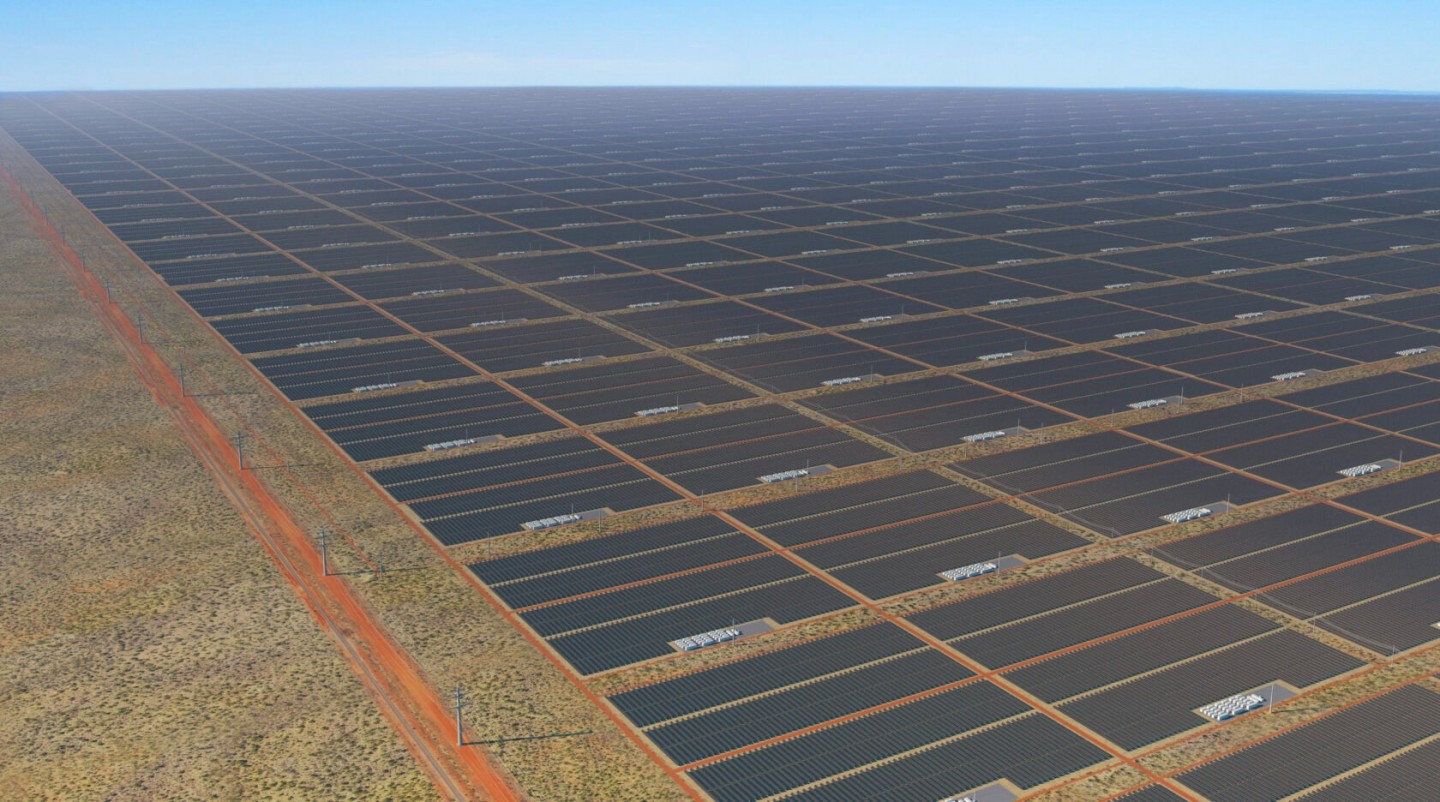The artist’s rendition of the Sun Cable solar farm in the Northern Territory is nothing short of monumental.
Black solar panels stretch as far as the eye can see, except for the slivers of bright red earth that characterise the Powell Creek Station, about 750kms south of Darwin.
If the ambitious megaproject goes ahead, it will be the world’s largest renewable energy transmission network and have the capacity to supply up to 15% of Singapore’s electricity piped through an undersea cable from the northern tip of Australia to Asia.
One of the project’s backers, Mike Cannon-Brookes, told the Guardian that the project, estimated to cost more than $30 billion, would make Australia a renewable energy “Superpower”.
“We can and should tap into our solar resources that could power the world five times over,” he said.
With the thousands of jobs Sun Cable is set to generate over the next decade – 1,500 construction jobs, 350 operations jobs and 12,000 indirect jobs – Aussie Gen Zs are set to take advantage of a smorgasbord of job opportunities as they enter the workforce.
The green energy revolution is still only in its infancy and will be a booming generation-defining industry for young people growing up today to work in. With our research finding 96% of Australian Gen Zs think climate change is human-made, they’re extremely keen on being involved in human-made solutions to it like the Sun Cable project.
It will generate 30% of what Australia’s current grids can deliver, while reducing greenhouse gas emissions by 8.6m tonnes per year.
And should it succeed, it could also be exactly what Australia needs to make meaningful pivots to a more sustainable future (insert Gen Z sigh of relief here).
However, the project might also have a little bit of trouble luring some socially-conscious Gen Zs into these positions.
Why?
Because what the project needs to also do, according to Amy Gunia in Time earlier this month, is help alleviate the crippling poverty faced by Outback indigenous communities.
As it stands the Sun Cables’ electricity will be sent to Darwin, and then on to Singapore via a 4,200km subsea cable route through Indonesia. But what impact it will have on local communities still isn’t fully known yet.
“This isn’t a new phenomenon,” Gunia wrote.
“Extractive industries like mineral mining and fossil fuels have made Australia one of the richest countries in the world, but that wealth has accrued unequally, often bypassing the people who live on the land that is exploited.”
With Gen Zs having grown up in a new era of re-energised corporate activism and responsibility, many who have an eye on social issues, on top of environmental issues, will be wanting to know that this project has social as well as environmental benefits.






